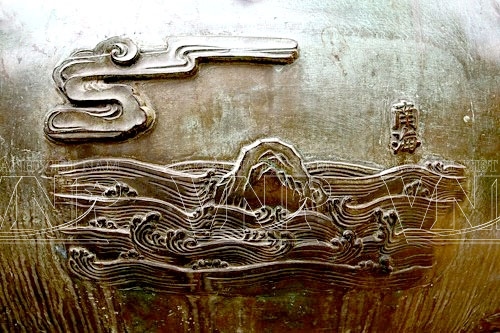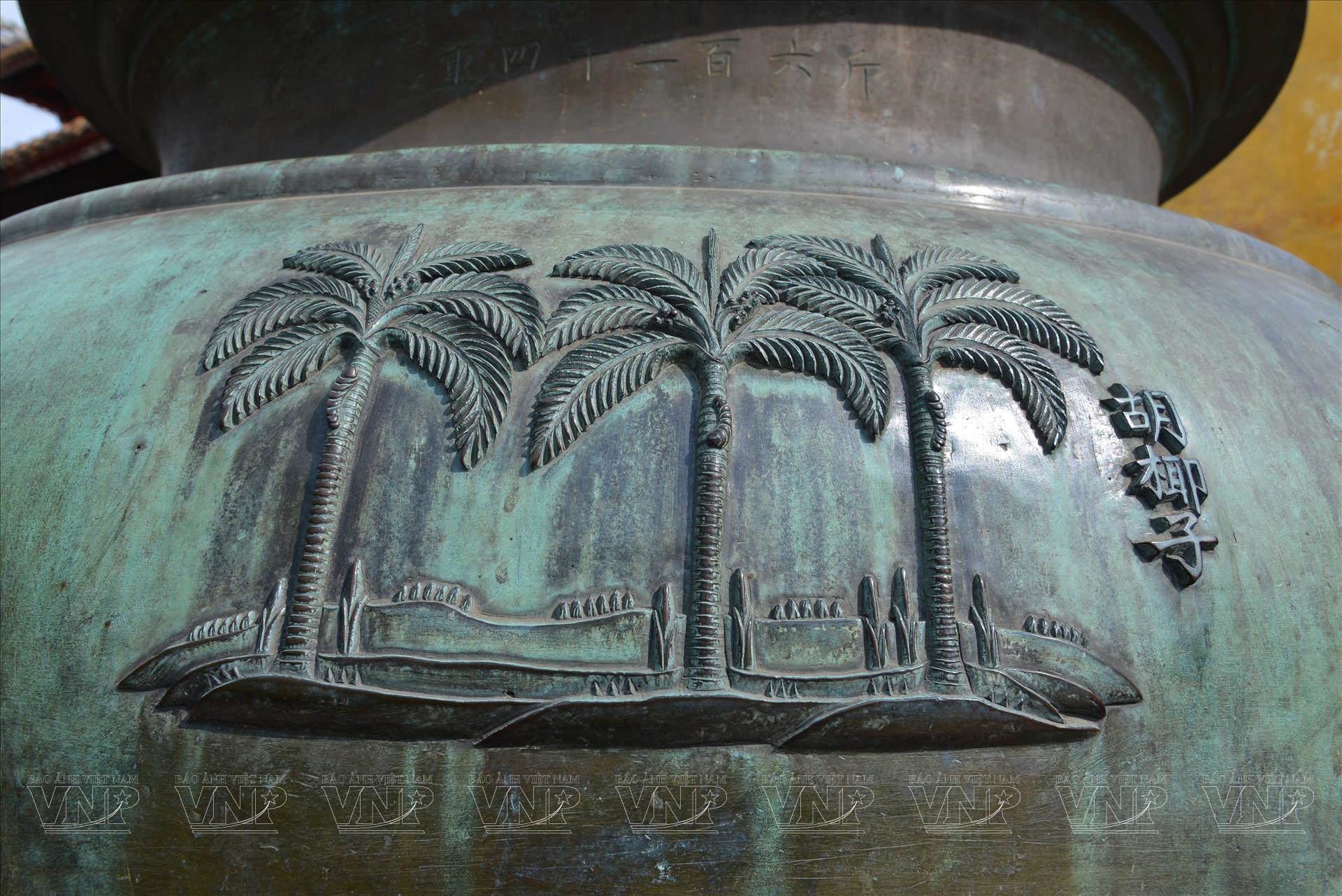Nine Dynastic Urns Inscribed on UNESCO’s Memory of World Register
UNESCO's files recognition of the 162 exquisite bronze castings on Hue's the Nine Dynastic Urns as Memory of the World Register highlights the exceptional and unique values of this 19th-century Vietnamese bronze "encyclopedia".
The Nine Dynastic Urns, nine large bronze vessels placed in front of the The To Mieu (within the Imperial City of Hue), were commissioned by King Minh Mang and the casting began in December 1835. The casting of the Nine Dynastic Urns was completed after more than a year and then further refined. Notably, the bodies of these nine large bronze urns bear a total of 162 exquisite castings depicting a vivid panorama of natural phenomena, mountains, rivers, borders, landmarks, products, weapons, vehicles, and the typical and characteristic aspects of Vietnam.
In addition to symbolizing the kings and showcasing the power of the Nguyen dynasty, the Nine Dynastic Urns are also considered a 19th-century Vietnamese "encyclopedia" with 162 exquisite bronze relief castings. The content of the castings is calculated, classified, and arranged into sets according to the number nine. For example, nine stars and natural phenomena in the universe; nine great mountains; nine major rivers; nine canals and other rivers; nine seaports, guardhouses; nine large four-legged animals; nine sacred animals; nine birds; nine food crops; nine vegetables and roots; nine flowers; nine fruit trees; nine precious medicinal herbs; nine trees; nine weapons; nine fish, snails, insects; nine boats, vehicles.
Through the images of these 162 castings, it can be seen that the castings represent a generalized but concise and diverse range of landscapes, landmarks, and products which are well known in each region of the country, creating a vivid picture depicting the beauty of the fatherland. For example, on the Tuyen dinh is the Red River, while the Huyen dinh has the Mekong River, and the Nhan dinh features the Huong River. If the Cao Urn has tigers in the forest, the Nhan dinh has whales in the sea.
Among the castings on the Nine Dynastic Urns, there are castings depicting many landmarks, mountains, rivers, and islands of Vietnam along with very clear Han script annotations, demonstrating the early assertion of territorial sovereignty by the Nguyen emperors. Notably, of the nine urns, King Minh Mang had three urns engraved with images of the sea to represent the overall state of Vietnam's seas and islands at that time. These include the East Sea cast on the Cao dinh, the South Sea cast on the Nhan dinh, and the West Sea cast on the Chuong dinh. These are also the three tallest and most important urns in the set of the Nine Dynastic Urns.
Along with a series of ancient Han-Nom scripts, the images of the seas and islands engraved on the Nine Dynastic Urns are a valuable source of information about Vietnam's sovereignty over the Hoang Sa and Truong Sa Archipelagos. They also show the posterity that the Nguyen kings all strived to protect and to enforce the country's maritime sovereignty from a very early age. In addition to their outstanding informational values as historical documents and encyclopedias, the Nine Urns are also considered masterpieces of 19th-century Vietnamese bronze casting techniques.
Another interesting fact is that if one looks at the history of feudal dynasties in countries in the region such as China, Japan, and Korea, one can see that the royal palaces of these countries do not have anything like the Nine Dynastic Urns cast in the Nguyen-era Hue Citadel. Even in Vietnam itself, the previous dynasties did not leave behind any such documents.
Therefore, the Nine Dynastic Urns are a "unique" and irreplaceable artifact. These artifacts have gone through nearly two centuries and have become an extremely rich and precious collection of antiquities. It is also a unique collection of relief castings, a collection of calligraphy (the seals of the emperors) and a collection of fine art that is extremely diverse, rich, and of great value./.
- Story: Thanh Hoa Photos: Thanh Hoa/VNP & Files Translated by Hong Hanh
























